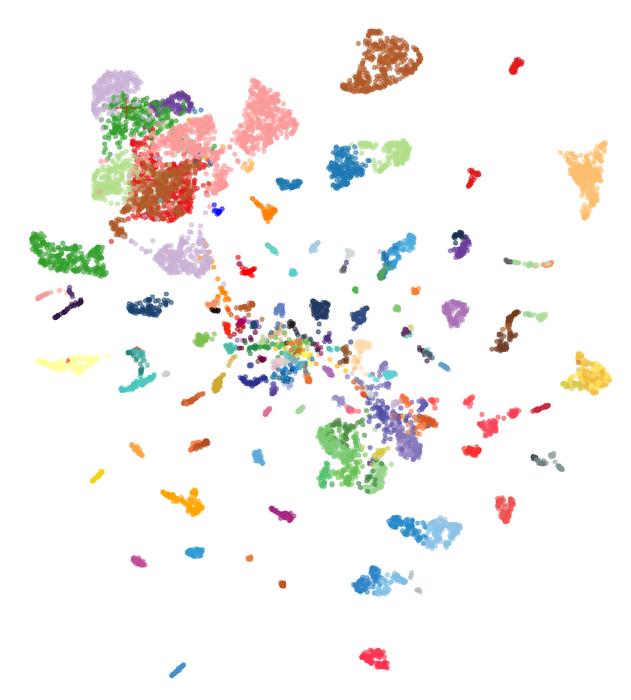In a groundbreaking advancement poised to revolutionize cancer diagnostics, researchers at Charité – Universitätsmedizin Berlin, in collaboration with international partners, have unveiled an artificial intelligence (AI) model capable of precisely classifying tumors based on their epigenetic signatures. Published in the renowned journal Nature Cancer, this novel AI framework, named crossNN, promises to transform the way oncologists diagnose and treat cancers, especially those located in anatomically sensitive and hard-to-biopsy regions such as the brain.
The traditional approach to tumor diagnosis largely depends on tissue biopsies and histological examination—methods that can be invasive, risky, and sometimes inconclusive. This is particularly true for brain tumors, where surgical sampling can carry significant risks. The new crossNN model bypasses these challenges by focusing on the tumor’s epigenome—the collection of chemical modifications that regulate gene expression without altering the underlying DNA sequence. These epigenetic modifications act as molecular fingerprints unique to each tumor type, enabling precise identification and classification.
Epigenetic landscapes contain hundreds of thousands of modifications that switch genes on or off, creating patterns that are as unique to tumors as fingerprints are to individuals. By harnessing these complex patterns, the AI model can accurately differentiate between more than 170 types of tumors originating from various organs. Remarkably, the model achieves 99.1 percent accuracy in brain tumor classification and 97.8 percent across all tumor types, outperforming previous AI approaches in oncology diagnostics.
What sets the crossNN model apart is its foundation on a relatively simple neural network architecture, making the AI both highly explainable and traceable—a significant improvement over many “black-box” AI systems. This means clinicians and researchers can understand exactly how the AI arrives at its conclusions, fostering trust and facilitating regulatory approvals for clinical use. Transparency in AI decision-making processes is critical for medical applications, where diagnostic errors can have profound consequences.
The training of crossNN involved an extensive dataset encompassing the epigenetic profiles of over 8,000 reference tumors, each represented by hundreds of thousands of data points derived from diverse sequencing methods. The model was rigorously tested on more than 5,000 tumor samples, demonstrating robust performance even when analyzing incomplete epigenetic profiles or data generated using different techniques and varying quality.
An especially notable breakthrough lies in the model’s compatibility with minimally invasive liquid biopsies. In cases of brain tumors, cerebrospinal fluid—obtained through lumbar puncture rather than brain surgery—can provide sufficient genetic material for epigenetic fingerprinting. Using rapid nanopore sequencing, the researchers successfully analyzed these cerebrospinal fluid samples to deliver diagnoses without the need for risky surgical interventions. For example, a patient presenting with double vision was diagnosed accurately with a central nervous system lymphoma, enabling immediate commencement of targeted chemotherapy.
The development of this AI diagnostic tool responds to an urgent clinical need. Cancer medicine is evolving towards highly personalized treatments, often targeting specific molecular pathways unique to tumor subtypes. Precise, rapid tumor classification not only guides therapy selection but also opens the door to enrolment in clinical trials for rare tumors that might otherwise be misdiagnosed or overlooked. Thus, the crossNN model may accelerate the implementation of tailored cancer therapies, improving patient outcomes significantly.
Looking ahead, the research consortium plans to validate crossNN through clinical trials at all eight German Cancer Consortium (DKTK) centers nationwide. These studies will evaluate the model’s intraoperative applications, potentially transforming surgical oncology by providing real-time, accurate tumor classification during operations. The researchers emphasize the scalability and cost-effectiveness of this approach, positioning it as an accessible diagnostic tool in routine oncological care worldwide.
Beyond brain tumors, the model’s ability to classify a vast array of tumors from diverse organs underscores its versatility. By integrating data from various DNA methylation platforms and sequencing technologies, crossNN demonstrates powerful cross-platform generalizability. This advance addresses a longstanding challenge in computational oncology, where heterogeneous data sources often hampered the development of reliable AI models.
The study reflects a successful fusion of molecular biology, bioinformatics, and machine learning. Bioinformatician Dr. Sören Lukassen noted that while many prior AI models were complex and opaque, crossNN balances simplicity with high precision. This strategic design choice ensures broader acceptance in clinical settings, where explainability remains a major hurdle for implementing AI tools.
Additionally, the open-access crossNN user platform offers practitioners worldwide an opportunity to utilize the model for tumor classification, fostering collaborative advancements and feedback loops to refine its diagnostic power. The platform serves as an interface between cutting-edge computational research and frontline clinical practice, bridging the gap that often exists between laboratory innovations and patient care.
In conclusion, the crossNN AI framework marks a significant stride in oncological diagnostics, leveraging the epigenetic codes embedded in tumor DNA to deliver fast, accurate, and non-invasive tumor classification. Its explainability, robustness, and adaptability position it as an indispensable tool that could soon become integral to personalized cancer medicine, reshaping treatment pathways and offering hope for patients with previously challenging tumor diagnoses.
Subject of Research: Not applicable
Article Title: crossNN is an explainable framework for cross-platform DNA methylation-based classification of tumors
News Publication Date: 6-Jun-2025
Web References:
- Original publication – Nature Cancer
- Department of Neuropathology – Charité
- Interdisciplinary Tumor Boards – Charité Comprehensive Cancer Center
- BIH Medical Omics
- crossNN user platform
References:
Yuan D et al. crossNN is an explainable framework for cross-platform DNA methylation-based classification of tumors. Nature Cancer. 2025 June 06. doi: 10.1038/s43018-025-00976-5
Image Credits: © Charité | Philipp Euskirchen
Keywords: AI tumor classification, epigenetics, DNA methylation, crossNN, brain tumor diagnosis, liquid biopsy, nanopore sequencing, machine learning oncology, explainable AI, personalized cancer medicine




